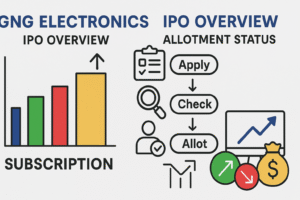
GST 2.0 and Health Insurance in 2025:
Will Premiums Really Drop?
Discover how India’s major GST reform is set to reshape health insurance costs, industry margins, and consumer savings.
Understanding GST 2.0: What Has Changed for Health Insurance?
The Goods and Services Tax (GST) Council, in its 56th meeting in early September 2025, announced a landmark reform:
From September 22, 2025, all individual health insurance policies in India are fully exempt from GST. This comes after years of health insurance premiums attracting a hefty 18% GST levy, which pushed up costs for millions of policyholders across the nation.
The reform extends to new and renewal policies alike, across a spectrum of offerings including individual, family floater, and senior citizen plans. The announcement was hailed as a bold step towards making healthcare more accessible and affordable for every Indian household.
How the Premium Pricing Formula Changes
To understand the impact, let’s review a simple before-and-after calculation for a hypothetical health insurance policy:
| Scenario | Base Premium (₹) | GST (18%) (₹) | Total Payable (₹) |
|---|---|---|---|
| Before GST 2.0 | 20,000 | 3,600 | 23,600 |
| After GST 2.0 (No GST) | 20,000 | 0 | 20,000 |
On paper, the new regime offers 18% savings to policyholders. However, the removal of GST comes with an unseen caveat that tempers the celebratory tone.
The Input Tax Credit Dilemma: Why Premiums Won’t Fall Fully
Under the old regime, insurance companies could offset their GST liability by claiming input tax credits (ITC) on services like agent commissions, marketing spends, IT, and reinsurance. With the GST now removed on output (the policy sold), insurers lose their ability to claim ITC on these substantial input costs. This loss is estimated at around 3%–5% of total premiums for most health insurers.
Industry Response: Price Hikes and the Margin Equation
Leading industry analyses suggest that insurers are preparing to implement tariff increases of 3–5% on new and renewal health insurance policies effective September 2025. According to data from brokerages and insurance associations, the move is necessary to:
- Offset around 3–5% unrecoverable input costs like agency commissions, distribution, marketing, etc.
- Absorb the GST paid on their own expenses which now can’t be offset via ITC
- Keep their profit margins and solvency ratios intact
The GST exemption also applies to reinsurance policies, but certain categories of input costs (distribution, marketing, IT services) will continue to attract GST, further reinforcing the need for a price adjustment.
What This Means for Policyholders
For most consumers, the new GST regime means health insurance is becoming more affordable. Here’s a concrete summary of the likely effects:
- Premiums will reduce by about 12–15% compared to pre-GST 2.0 levels for most plans.
- Actual savings may vary by product segment, insurer, and whether part of the ITC cost is absorbed by the company or fully passed to customers.
- The move is expected to increase health insurance penetration, especially among first-time buyers and families from Tier 2 and Tier 3 cities.
Key Pros and Cons at a Glance
| Pros | Cons |
|---|---|
| Lower overall out-of-pocket premium costs for consumers | Insurers may raise premiums by 3–5% to offset ITC loss |
| Encourages wider adoption of health insurance, especially in underserved regions | Long-term product innovation and bonuses may decline if margins get squeezed |
| Boosts government’s push for universal insurance (“Insurance for All”) | Short-term confusion as insurers adjust pricing; possible ambiguity for existing customers |
Market Outlook: Will Demand Surpass the Revenue Hit?
The government’s GST 2.0 reform is both a social and economic experiment. By cutting the cost of insurance, New Delhi hopes to:
- Increase adoption rates among India’s under-insured millions
- Drive up renewals and policy upgrades among existing customers
- Create opportunities for insurers to diversify products and grow their customer base
While insurers face an initial margin squeeze, experts suggest that the sheer volume of new customers could ultimately offset the ITC loss. Over time, the uptick in insured individuals may even drive down per-policy administrative costs for these companies.
Practical Tips for Policyholders in 2025
- Renew strategically: Consider waiting until after September 22, 2025, for renewals to take advantage of lower GST-free premiums.
- Compare policies: With the tariff recalibration, plans may get more competitive; shop around before committing.
- Clarify inclusions: Check if value-added covers or riders see further base price hikes or changes in structure.
- Understand the savings: Your true savings will be closer to 12–15% rather than the full 18% GST formerly charged.
FAQs: GST 2.0 and Health Insurance in India
Conclusion: A New Era for Insurance Accessibility
GST 2.0 marks a major policy pivot designed to democratize health insurance in India. While the headline figures may be softened by input tax credit complications, most customers will still see significant and permanent reductions in their annual premium outlay. For insurers, the calculus is more nuanced, but as volume and public trust rise, it is likely the market will adjust for everyone’s benefit.
As always, staying informed and comparing policy options will help maximize value in this evolving insurance landscape. The GST 2.0 reform stands as a testament to the government’s push towards “Insurance for All” by making health security truly affordable and sustainable for Indian families.








Post Comment